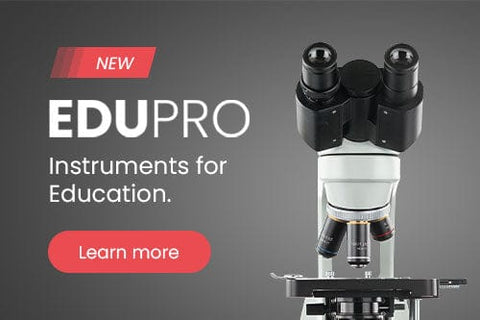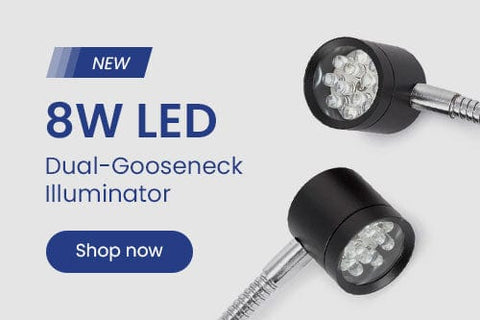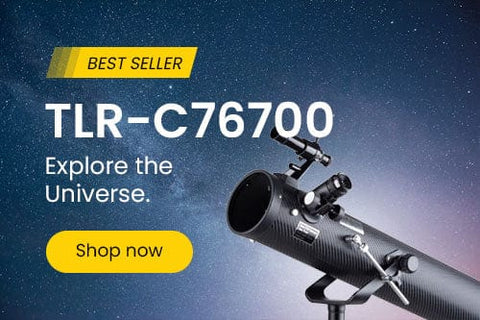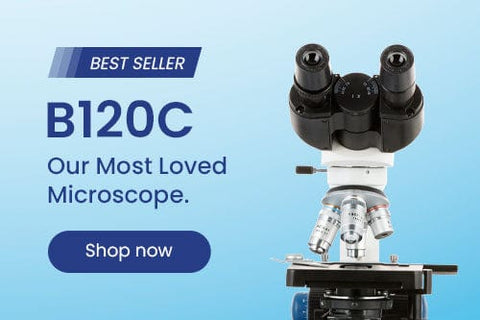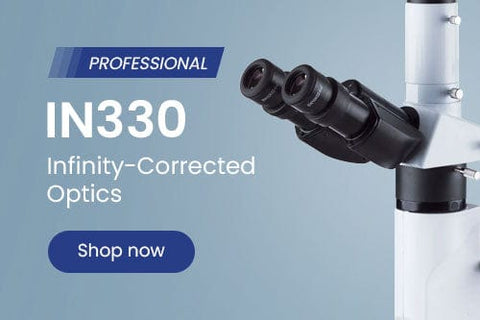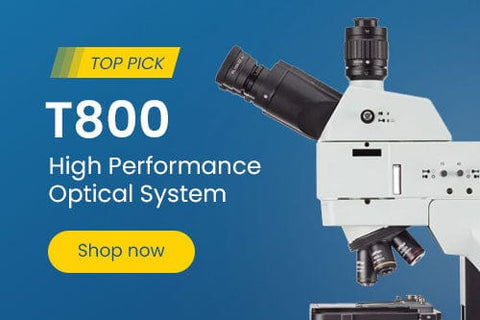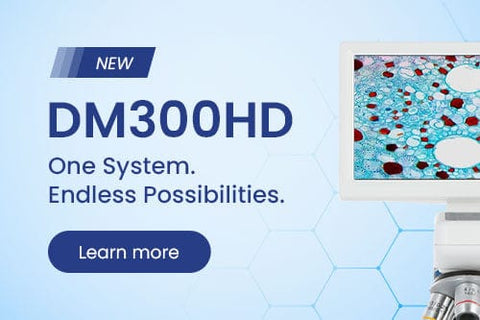- Microscopes
- Cameras
- Lab Supplies & Equipment
- Shop By Brand
- Lab Supplies by Category
- Analyzer Consumables
- Balances
- Bags
- Beakers
- Bench Scale Bases
- Bottles
- Bottletop Burettes
- Bottletop Dispensers
- Boxes
- Blank Microscope Slides & Cover Slips
- Blood Collection
- Caps
- Carboys
- Centrifuges
- Centrifuge Tubes
- Cold Storage
- Containers
- Cryogenic Vials
- Culture Tubes
- Cylinders
- Dispensers
- Digital Dry-Baths
- ESR Products
- False Bottom Tubes
- Flat Bottom
- Funnels
- Gel Documentation
- Glassware
- Glass Test Tubes
- Histology
- Homogenizers
- Hotplates-Stirrers
- Inoculation Loops and Spreaders
- Liquid Handling Products
- Manual-Electronic Pipettors-Pipettes
- Microscope Slides
- Overhead Stirrers
- Pipette Controller (Serological Filller)
- Pipette Tips
- Plastic Test Tubes
- PCR Tubes, Strips & Plates
- Racks
- Repeater Pipettor
- Rockers
- Rotary Evaporators
- Serological Pipettes
- Shakers
- Spectrophotometers
- Syringe Tips
- Sample Tubes
- School/Classroom Supplies
- Screwcap Test Tubes
- Self-Standing
- Test Tube Racks
- Test Tubes & Vials
- Transport & Storage Tubes
- Thermal Mixers
- Transfer Pipets
- Urinalysis
- Vacuum Pumps
- Weighing Dishes
- Lab Equipment
- Balances
- Bench Scale Bases
- Centrifuges
- Digital Dry-Baths
- Gel Documentation
- Homogenizers
- Hotplates-Stirrers
- Overhead Stirrers
- Pipettors
- Rockers
- Rotary Evaporators
- Shakers
- Serological Pipettes
- Spectrophotometers
- Thermal Mixers
- Vacuum Pumps
- Liquid Handling Products
- Manual-Electronic Pipettors-Pipettes
- Pipette Tips
- Racks
- Pipette Fillers-Controllers
- Repeater Pipettor
- Syringe Tips
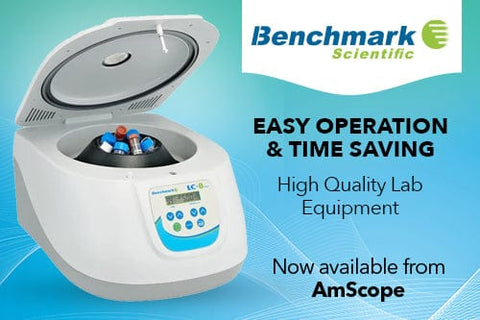
Cost effective products and solutions designed to improve laboratory efficiency, safety and results.
SHOP BENCHMARK SCIENTIFIC >
- Slides & Accessories
- Slides
- Cameras
- Illuminators
- Adapters
- Eyepieces / Objectives
- Bulbs
- Magnifying Lamps
- Monitors and Tablets
- View All Categories
- Adapters
- DSLR Adapters
- USB Camera Adapters
- Ring Light Adapters
- Power Adapters
- Barlow Lens
- Books & Experiments Cards
- Bags & Cases
- Bags
- Cases
- Cameras
- Circuit Board Holders
- Cleaning Kits
- Condensers
- Darkfield
- Phase Contrast Kits
- Polarizing Kits
- Dust Covers
- Eye-Guards
- Eyepieces
- 20mm
- 23mm
- 30mm
- 30.5mm
- Filters
- Microscope Filters
- Illuminator Filters
- Fluorescence Kits
- Conversion Kits
- Filter Cubes
- Focusing Racks
- Fuses
- Illuminators
- Bulbs
- LED Illuminators
- Fiber Optic Illuminators
- Fluorescent Illuminators
- Ring Lights
- Stand Lights
- Goosenecks
- Gooseneck Attachments
- Immersion Oils
- Loupes
- Magnifying Lamps
- Clamp Lamps
- Desktop Lamps
- Rolling Stand Lamps
- Mechanical Stages
- Monitors and Tablets
- Calibration Slides & Stage Micrometers
- Stage Warmers
- Stain Kits
- Stands
- Articulating Arm Stands
- Boom Stands
- Table Stands
- Tweezers
- Other Accessories
- Shop By Industry
- Shop By Industry
- Botany
- Agronomy & Forestry
- Horticulture
- Phytopathology
- Chemistry
- Biochemistry
- Biotechnology
- Cannabis
- Pharmaceutics
- Consumables
- Beer & Wine
- Cosmetics
- Food & Beverage
- Electronics
- Circuit Boards & General Electronics
- Mobile Phone Repair
- Semiconductors & Wafers
- Environmental
- Asbestos
- Ecosystem Research
- Mud Logging
- Soil Treatment
- Water Treatment
- Forensics
- Ballistics
- Fingerprint Analysis
- Genetic Identification
- Hair & Fiber Analysis
- Handwriting Analysis
- Industrial
- Aerospace
- Automotive
- Dental Lab & Production
- Glass Industry
- Industrial Inspection
- Mechanical Parts
- Paper Industry
- Petrochemical
- Plastics
- Printing Industry
- Quality Assurance & Failure Analysis
- Textiles & Fibers
- Tool Making
- Wood Production
- Jewelry & Gemology
- Engraving
- Gemology
- Jewelry Repair
- Stone Setting
- Watch Repair
- Hobby
- Coins & Collecting
- Stamps
- Modeling & Assembly
- Sculpting
- Repair
- Telescopes
- Metallurgy
- Archaeology
- Geology
- Mining
- Petrology
- Medical & Microbiology
- Anatomopathology
- Bacteriology
- Biochemistry
- Cell Culture
- Cytology
- Dental Microbiology
- Dermatology
- Dissection
- Gout & Rheumatology
- Hair & Fiber Analysis
- Hair Transplant
- Fluorescence
- Hematology & Live Blood Analysis
- Histopathology
- Mycology
- Medical Devices
- Microsurgery
- Neuropathology
- Oncology
- Parasitology
- Pathology
- Semen Analysis
- Virology
- Veterinary & Zoology
- Breeding & Semen Analysis
- Entomology
- Fecal Smears & Floats
- Marine Biology
- Ornithology
- Veterinary Medicine
- Zoology
- Shop By Industry
- Students
- Telescopes
- Buy With Prime
- Sale
- Compound Microscopes
- Shop By Brand
- AmScope
- Euromex
- Omax
- Shop by Head Type
- Binocular
- Monocular
- Trinocular
- Multi-head & Training
- Shop By Specialty
- Brightfield
- Darkfield
- Phase Contrast
- Inverted
- EPIfluorescence
- Polarizing
- Digital Integrated
- Metallurgical
- Shop By Application
- Education
- Research
- Veterinary
- Compound With Digital Head
- Shop Best Sellers
- Shop All Compound
- Stereo Microscopes
- Shop By Brand
- AmScope
- Euromex
- Shop By Objective Type
- Fixed Power
- Zoom Power
- Single Lens
- Common Main Objective
- Shop By Stand Type
- Articulating Arms
- Boom Stands
- Gooseneck Stands
- Table Stands
- Other Stands
- Shop By Head Type
- Binocular
- Monocular
- Trinocular
- Simul-Focal
- Shop By Industry
- Video Inspection
- Industrial Inspection
- Microscope Heads
- Shop Stands
- Articulating Arm
- Boom Stands
- Table Stands
- Stereo With Digital Head
- Shop Best Sellers
- Shop All Stereo
- Specialized Microscopes
- Digital Microscopes
- Kids, Student Microscopes
| AmScope Blogs
Top Microscopes for Electronics Repair and Soldering

Are you planning to repair printed circuit boards or perform surface mount soldering? One thing you'll need is a tool that gives a clear view. From stereo microscopes to digital microscopes to the accessories you can't go without, AmScope has it all.
Developed in 1936 by inventor Charles Ducas, the modern-day printed circuit board (PCB) has come a long way since its inception. It now powers electronic devices in applications across a wide range of industries. The PCB found in your phone houses components with more computing power than the ones NASA used to put the first man on the moon.
How do you repair such small and intricate devices? Whether you're fixing damaged PCBs or soldering on new components, the first thing you need is a microscope that will let you see what you're doing. To that end, stereo microscopes and digital microscopes both help technicians and hobbyists perform their PCB repairs by giving them a crystal-clear view of those tiny interconnections. They work great as QA microscopes, and while they function in different ways and come with different magnifications and accessories, both get the electronic job done.
Stereo Microscope and Digital Microscope Applications
As with all magnifying devices, stereo microscopes and digital microscopes give an enlarged and clearer view of the objects in their field. Some common applications of these two devices are:
- Surface mount device (SMD) soldering
- PCB inspection
- Scanning for fractures and defects
- Circuit board analysis
Many other applications outside of the electronics industry exist for these soldering microscopes — spotting counterfeit currency, jewelry repair, and watch-making, to name a few. The applications for electronic repair microscopes may be quite diverse but they all have something in common: They all require a high-precision view.
Two of the most common uses of stereo microscopes and digital microscopes are PCB inspection and SMD soldering. In PCB inspection, components — like batteries, transistors, and sensors — are carefully viewed to examine any potential defects like cracks or short circuits. In SMD soldering, new components are attached to existing circuit boards or broken interconnections are mended to repair damaged devices.
Stereo Microscope and Digital Microscope: What's the Difference?
While you may find them in similar applications, stereo microscopes and digital microscopes work very differently.
Stereo Microscopes
There are several differences between stereo microscopes and conventional compound microscopes, most of which pertain to how they form the image in your view.
Rather than magnifying transmitted light as compound microscopes do, stereo microscopes bring reflected light back to the user's eye — although some use a light fixture underneath the sample for transmitted illumination, as well. This makes stereo microscopes ideal for viewing objects with high opacity, which could not be viewed with a standard scope.
Another difference is that while conventional microscopes only have a single ocular tube, stereo microscopes have one for each eye. The two are mounted at slightly different angles so that light can be refracted from different vantage points, and the result is a 3D image of the object in view.
Regarding magnification, stereo microscopes often possess two options:
- Fixed: The fixed magnification is determined by multiplying the power of the eyepiece and auxiliary lens.
- Zoom: The continuous zoom feature offers a range of magnification powers as a dial is adjusted. Generally, stereo microscopes deliver a magnification between 40x–1,000x, but 10x–200x will usually suffice for electronics repair and SMD soldering.
Digital Microscopes
While stereo microscopes use analog methods for their magnification, digital microscopes are altogether different. By making use of a digital camera, these repair microscopes work by taking pictures of their object and outputting them onto your computer or phone.
Digital microscopes provide several advantages over their analog counterparts, namely:
- Comfort: No more hunching over your scope with these devices. Digital microscopes allow you to view your object from your monitor while sitting upright.
- Clarity: Features like anti-halation to prevent glaring and high dynamic range (HDR) for sharper color and contrast give the crisp image that electronics repairers need.
- Sharing: An open-monitor view lets colleagues view images more easily than with a standard scope, and many digital microscopes can use a memory card to store their pictures for later use.
- Portability: Some electronics repairs may need to be done on the go, and the smaller size makes digital microscopes the only choice for such applications.
Once they have taken a picture of the sample, the device attached to the scope converts the data into an image based on the monitor's pixel ratio, so the exact magnification will vary depending on the size of the screen that projects it. Generally, though, digital microscopes have a magnification of 40x–7,000x — well beyond that of a stereo microscope, and certainly enough for electronics repair and SMD soldering. When choosing your digital microscope, remember that it must be compatible with the operating system you plan to connect it to. Check for OS compatibility before you make a purchase.
Stereo Microscope and Digital Microscope Accessories
Once you choose between a stereo or digital microscope, you still may need some accessories to help your project along. Some of the most common stereo and digital microscope accessories are:
- Stands
- Condensers
- Lenses
- Stages
- Circuit board mounts
- Memory cards
- Gooseneck lights
There are many microscope accessories to choose from, and AmScope carries a wide selection of tools that you'll need for your scope.
Which Type of Microscope Is Best?
The exact type of microscope you use will depend on the needs of your project, but to help you find the one that's right for you, we've put together this list of some of our favorite scopes.
|
What You're Looking For |
Name |
Product Number |
|
Best Selling Scope |
3.5X-90X Trinocular Stereo Microscope with 4-Zone 144-LED Ring Light, Awarded #1 2017 Top Microscope on Ezvid |
|
|
Best Digital Microscope |
1080p 2MP HDMI Digital Microscope with 11" Articulating Arm |
|
|
Best High-end Scope |
3.5X-90X Articulating Stereo Microscope w 80-LED Light + 9MP USB Digital Camera |
|
|
Best Scope on a Budget |
5X-500X 2MP Handheld USB Digital Microscope with LED Illumination |
|
|
Best Intermediate Scope |
10X-20X Compact Fixed-Lens Stereo Boom-Arm Microscope with Gooseneck LED Light |
|
|
Best Beginner Scope |
8x Binocular - Gooseneck Arm Stereo Microscope with 8W Fluorescent Ring Light |
As you can see, we have a huge selection of stereo microscopes, digital microscopes, and all the accessories that your electronics repair project will need. Visit our site today and find the one that's right for you!
SOURCES:
- Olympus: What Is a Digital Microscope?
- TheOptics.org: 5 Best Microscopes for Electronics Repair – All Problems Solved
- MicroscopyU: Introduction to Stereomicroscopy
Free Shipping on orders $149+
Same day shipping for orders within the contiguous U.S.
Easy Returns
Hassle-free 30-day return policy. 100% satisfaction guarantee.
Quality Products
5-year warranty on AmScope microscopes.
Got a question?
Speak to our team of experts and find the products you need.






